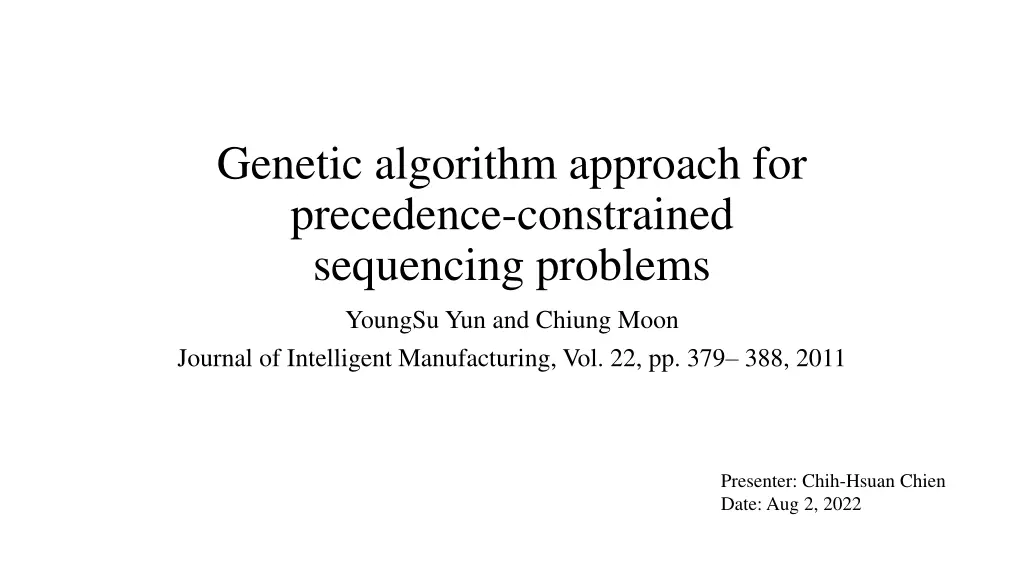
Genetic Algorithm Approach for Precedence-Constrained Sequencing
"Explore a genetic algorithm approach utilizing a topological sort-based representation to effectively solve precedence-constrained sequencing problems. The method aids in determining optimal sequences with experimental results showcasing its efficacy in diverse scenarios."
Uploaded on | 0 Views
Download Presentation

Please find below an Image/Link to download the presentation.
The content on the website is provided AS IS for your information and personal use only. It may not be sold, licensed, or shared on other websites without obtaining consent from the author. If you encounter any issues during the download, it is possible that the publisher has removed the file from their server.
You are allowed to download the files provided on this website for personal or commercial use, subject to the condition that they are used lawfully. All files are the property of their respective owners.
The content on the website is provided AS IS for your information and personal use only. It may not be sold, licensed, or shared on other websites without obtaining consent from the author.
E N D
Presentation Transcript
Genetic algorithm approach for precedence-constrained sequencing problems YoungSu Yun and Chiung Moon Journal of Intelligent Manufacturing, Vol. 22, pp. 379 388, 2011 Presenter: Chih-Hsuan Chien Date:Aug 2, 2022
Abstract In this paper we propose a genetic algorithm (GA) approach based on a topological sort (TS)-based representation procedure for effectively solving precedence constrained sequencing problems (PCSPs). The TS- based representation procedure used in the proposed GA approach can generate feasible sequences in PCSPs. By applying the proposed GA approach, the sequence determination problems with precedence constraints can be easily solved. Experimental results show that the proposed GA approach is a good alternative in locating optimal sequence for various types of PCSPs.
Precedence-constrained sequencing problem (PCSP) (1,3,2,4,5 )
Priority-based 1 2 3 4 5 priority 4 1 5 2 3 (1,3,2,4,5 )
TS-based (2,1,3,4,5 )
Crossover (a, b, c, d)= (2, 1, 3, 1) a: 1- population size b and c: 1-node size d:0- 2
Crossover (a, b, c, d)= (2, 1, 3, 1) Before crossover: After crossover:
Mutation Before mutation: After mutation:
